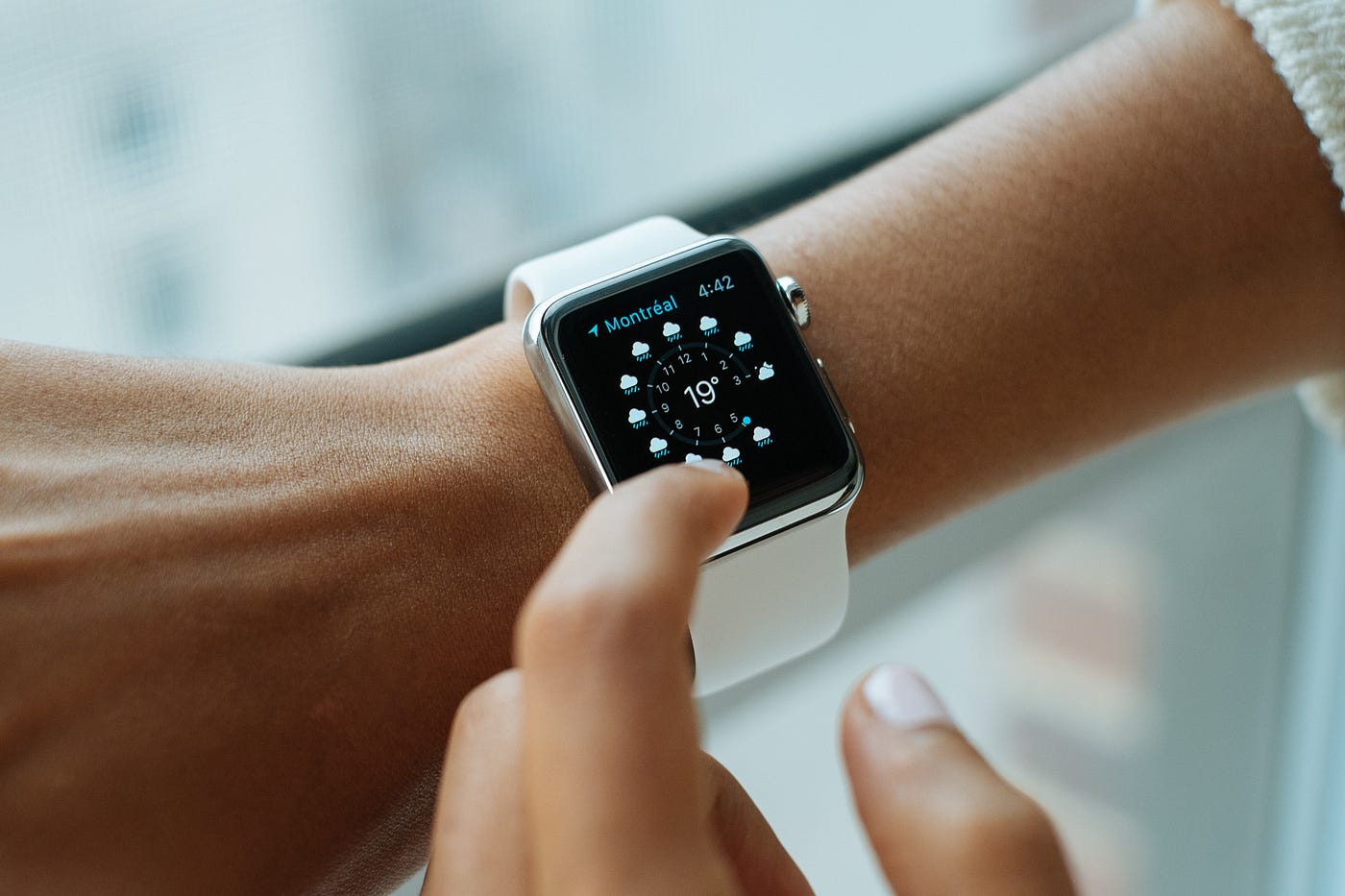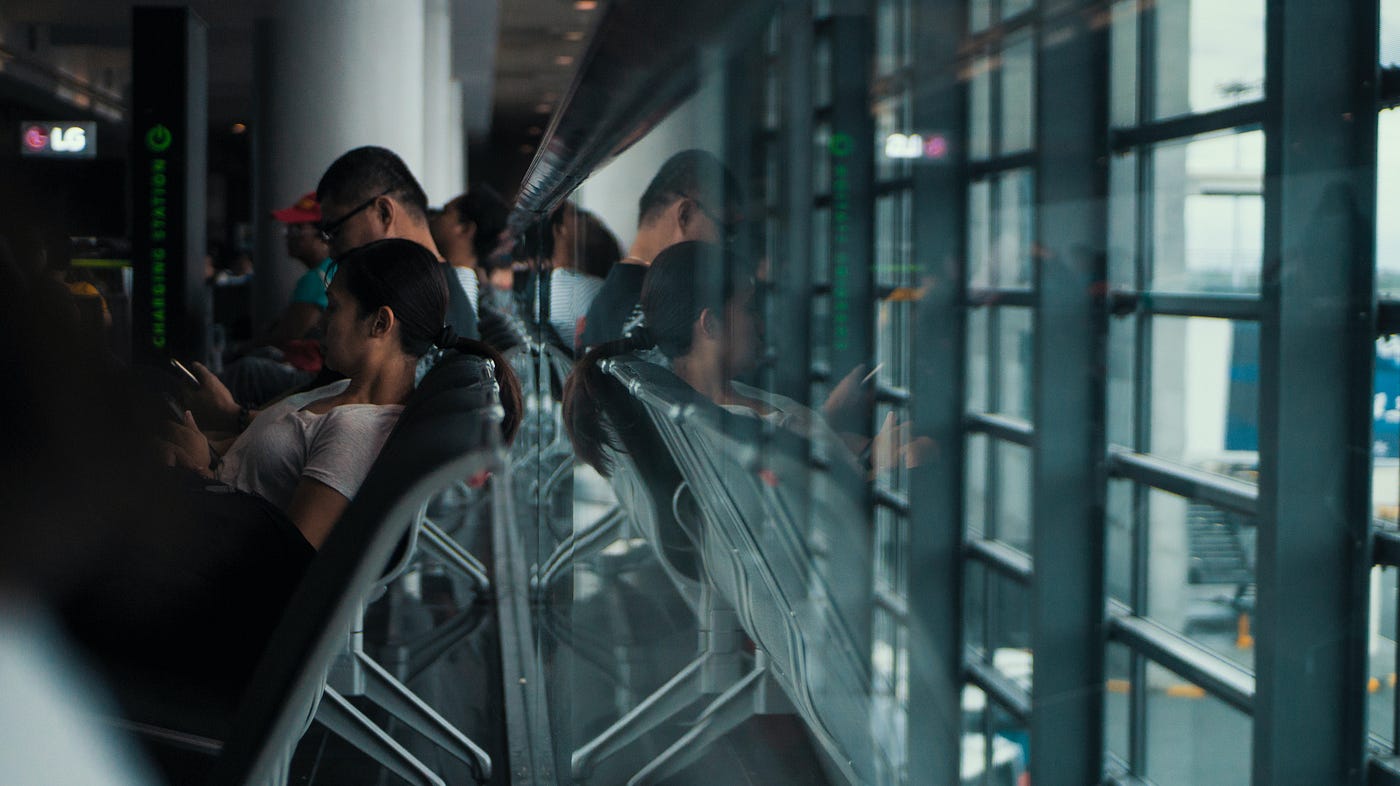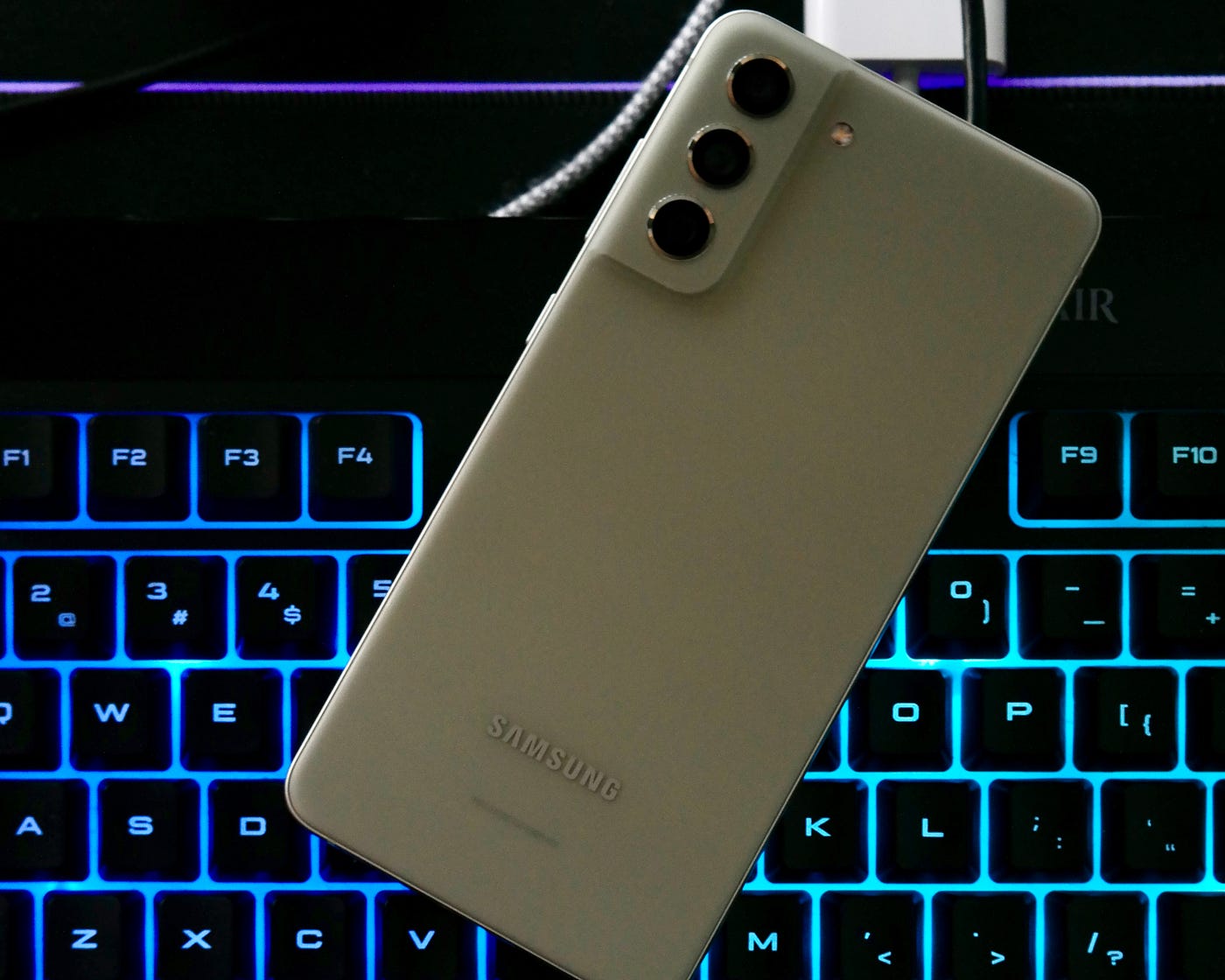

Why it helps to be a bit nerdy as a product designer
source link: https://uxdesign.cc/why-it-helps-to-be-a-bit-nerdy-as-a-product-designer-7c477f9bd606
Go to the source link to view the article. You can view the picture content, updated content and better typesetting reading experience. If the link is broken, please click the button below to view the snapshot at that time.

Why it helps to be a bit nerdy as a product designer
Getting excited about CES every year and pre-ordering video games can be fuel for product designers.

Something I tried to downplay and hide for many years of my adult life is just how much I “nerd out” over technology. By that I mean how much I obsess, get absolute joy, and have an unending curiosity about the new hardware and software that envelops our lives. I was the kid that would look forward to the Circuit City and Best Buy ads in the Sunday newspaper, and still as an adult, I look forward to every tech event like CES, Mobile World Congress (MWC), announcements by Apple, Samsung, Sony, Google, <insert any major tech company here>.
Getting into the “adult” life of Corporate America, 401k’s, and contributing to a health savings account (boring adult stuff) — I became ashamed about my love for tech. I hid from most people that I had events on my personal calendar reminding me of when Apple’s next announcement was live-streamed, or that I upgraded my phone again because Samsung had released a new Galaxy Note. Why? Because as an “adult”, friends, family, and co-workers would scoff at the fact that I was excited to talk about any of this.
People I cared about were judging me because I was passionate about tech & gadgets.
This wasn’t some underlying millennial made-up insecurity either, I would literally get laughed at, people would tune out of conversations within the first few seconds of me explaining this thing I was excited about, and the “you need a man” comment was thrown around multiple times — as if having a partner would stop my love of tech. What’s funny is those same people would always come to me for their tech problems, like I was their own personal Geek Squad.
What about my career though? What about my job as a product designer and working in the UX/UI world for the past couple of years? What about my 12-year start in the marketing & branding world as a designer? How has this love for tech helped me?
The truth is, this love for technology has helped me my entire career. It kept me at the forefront of the latest social platforms during the rise of Twitter and Facebook marketing, an early adopter of portable VR with the Oculus/Samsung partnership years ago, and now in the product world, it keeps me thinking not just about the people I design for, but how those people truly interact with their tech.

When I see these new devices get announced, I’m equally curious about the way consumers receive these new gadgets. I love seeing how people customize their Apple Watch bands to match their outfits, or how a senior citizen is using the flash on their phone as a light to read a menu at a restaurant — it’s not just about the object but the people that use these objects. These pieces of tech have radically changed our lives and mostly for the better.
This gets me thinking about more than just the aesthetics of technology, but the psychology and emotional connection people have with this tech, and even the societal impact of connecting millions of people to the internet in a new nation. From a UX lens, it has helped me realize that people are still the biggest, most important element when it comes to technology. Without people, there would be no tech.
Lessons Learned & Observations
If you’ve made it this far in the article, let me give a quick list of my own observations when it comes to tech as a product designer. Some of these are based on actual data and analytics, while others are simply my professional observation and opinion — so feel free to challenge any of these points:
- Technology is an enhancement to people’s lives, not the center of it — even if we love tech ourselves, it still is important to understand that most people just see these devices as tools.
- Analytics around device types helps tremendously — get to know what devices our users are actually using, and then try those devices. Get out of our iOS ecosystem for a little while, or try out that Amazon Halo Band.
- People don’t always get the latest gadgets— it’s important to know if our user base is using older, slower, or budget devices. Slower devices mean less flashy animations or even limitations around cellular bands resulting in lost signals if our users are deep in a building.
- Some exciting new tech may never catch on — things like Augmented Reality and Virtual Reality are great examples of this. Google Glasses failed in the consumer market, and with distrust in Meta (who’s at the helm of VR), we may never see a full adoption of virtual reality from the average consumer.
- Some tech may come back later — QR codes, y’all. QR codes. I remember when they first hit the U.S. in the early 2000s and then fizzled out. They never really faded away in markets like China, but because of a pandemic, touch-free information is everywhere making it common in the western world to scan a QR code again for things like menus or making a payment. Some tech might make a return to our market.
- In the end, people win — the most recent example of tech failing to force users a certain way is probably with Apple and the return of the chunkier, touch bar-less, port-o-plenty MacBook Pro. They tried to force their power users into a dongle ecosystem and thinner laptop — but creative professionals desired ease, durability, and power over lightness and gimmicks. Thus, we have a throwback to the earlier MacBook Pros now.
I could go on all day, but I’ll start wrapping this up.
Don’t overlook the hardware
I found that I can focus on psychology and aesthetics all I want, but unless I truly understand the technology my users — my people — are accessing (phones, computers, tablets, wearables, vehicles, etc), I’m going to miss a key part of how those people behave. Most of this revolves around limitations with their tech, but can also shine light on new capabilities to try.

I’m not saying we all need to mark our calendars whenever there’s a new consumer product announcement, but it does help to pay attention to technology and its very intimate role in people’s lives. It matters and it matters a lot, even if they don’t adopt the new tech right away.
Additionally, some of us product designers design for a very global audience, meaning what’s popular in our own bubble is not necessarily what’s popular or financially accessible in other places. This doesn’t mean that people should miss out on a good experience with our product, it just means that we as designers need to adapt what we create so it works on a larger scale, even if that means simplifying for slower cell service or ancient Qualcomm processors.
On the flip side, embracing our inner technology nerd is so helpful when it comes to being prepared for what emerging tech is going to influence our users. Like the tools we use to design interfaces, I feel as though we should know the tools our users are given to operate our digital products & experiences.
Keeping Up to Date
If you’re looking for some good resources to keep up with tech trends, it’s pretty simple to find good ones with a quick Google search, but I’ll share my favorite: The Verge.
I’m usually visiting The Verge daily to check out new tech announcements and even social impacts that are happening because of technology. No, it’s not a UX site or majestic designer-run portfolio site with fancy UI mockups — it’s a site that focuses on technology news. They also have remarkable video content with deep dives if you want to watch their updates on YouTube.
For those of us who are obsessive over tech, I say let’s keep that obsession going! Embrace it and use it to your advantage as a product designer who’s always in the know. Understanding the gadgets that our users have access to really is key to understanding their behavior. To hell with the people that judge us “nerds” for always upgrading our phones, or having both an Xbox and a Playstation in their home — we have a wider lens on what tech is out there, and we can use that to keep more people (users) in mind when we design.
Finally, I think we should focus on all sorts of aspects around tech, like how long people keep their phones, if they own a laptop or just a tablet, and what actually brings the average person happiness around having that new home security camera system. It can all be interesting, no matter how mundane others might think it is.
Further Reading & Watching
There are loads of more deep dives into the psychology and emotional connection that people have with their technology and how important it is to our everyday lives. Here’s some of my favorites:
- Psychology of Technology Institute — a collective focused on the opportunities and dangers of emerging tech and how to help enhance the human-technology relationship.
- “‘Overreacting to Failure’: Facebook’s New Myanmar Strategy Baffles Local Activists” — a dive into one of the worst humanitarian crisis in modern times, and how a social platform (Facebook) unintentionally fueled it.
- (Video) Lets Rethink Emerging Markets by Vito Margiotta — This TED Talk goes into how emerging markets have fostered environments for new innovations due to age, economics, and access to technology.
- “Smartphone users are waiting longer to upgrade — here’s why” — This CNBC article does a great job explaining the recent trend in U.S. and Europe on why people are holding on to their phones longer.
- MIT Age Lab: Home & Logistics — the MIT Age Lab is one of my favorite organizations when it comes to understanding how technology can help our aging population.
Recommend
-
 6
6
Two ‘trash can’ Macs form core of nerdy workstation built to last [Setups]Those two "trash cans" at upper left prove core to this setup.Photo: XTJ7@RedditRedditor XTJ7, a programmer and photographer based in Germany, knows h...
-
 8
8
Talk nerdy to meOr: the value of investing in yourself and your team to develop expertise beyond “design”
-
 6
6
Context Our company has organized "Secret Santa", pre-covid times. I got the name of a nerdy colleague and a friend. I decided to gift him Amazon gift coupon. Like people usually do - hiding gift somewhere in desk, I instead...
-
 3
3
MoviesBrace Yourself, Nerd: Holiday Shopping Starts NowGet your list going with gifts and decor featuring House of the Drag...
-
 12
12
Why you s...
-
 4
4
Disney Plus gift subscription...
-
 2
2
The Impossibly Nerdy Online Game That’s Fixing the Brains of Media TwitterDiplomacy is a strategy game beloved by a small group of policy wonks and journalists. It’s also healing their Twitter-addled brains.
-
 8
8
12 areas ChatGPT helps my work as a UX designerWe need to talk about AI because it’s a game-changer
-
 4
4
Movies35 Nerdy Oscar-Nominated Movies That Didn’t Win Best PictureScience fiction and fantasy films have a long history of fail...
-
 6
6
All of Netflix's Nerdy Announcements at Tudum 2023TelevisionAll of Netflix's N...
About Joyk
Aggregate valuable and interesting links.
Joyk means Joy of geeK